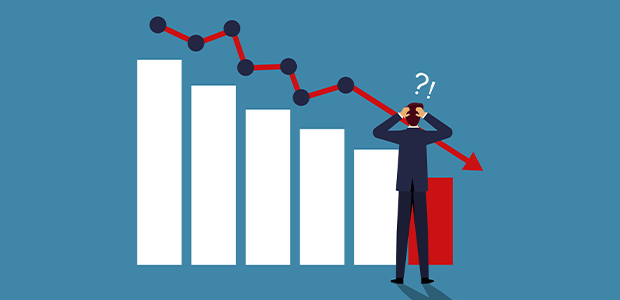
How can we deal with the decline of conventional digital marketing platforms in 2025?
It’s 2025, and your reliable Google Ads campaigns produce only half the leads they produced three years ago, your organic search rank is in free fall, your target audience spends less and less time on older platforms, and your long-term strategies no longer yield fruit. Sound familiar? Don’t fret, you're not alone. Marketers worldwide are grappling with this seismic shift in marketing trends. But here’s a silver lining: with each challenge comes opportunity.
As older platforms fall apart, those who understand the "why" of these shifts and adapt will be the ones who make these obstacles work for them and deliver real growth. Let’s dissect what’s driving this downturn, changing behaviours in your target audience, and most importantly, actions you can take to survive and even thrive in this new age of marketing.
What’s happening?
The decline of major platforms like Google Ads, Facebook, and LinkedIn isn’t just a theory anymore – it’s a reality. Gartner predicts organic search traffic will drop by 25% by 2026, with a potential 50% reduction by 2028. But what’s causing this fundamental change?
- The rise of zero-click searches: many users now get their answers directly from search results without ever clicking through to a website. Tools like Google’s featured snippets and knowledge panels provide instant information, leaving brands struggling to drive traffic
- Channel diversification: consumers are moving beyond traditional platforms and spending more time on alternatives like YouTube, TikTok, and AI-powered virtual assistants to find information and entertainment
- The impact of AI and LLMs (Large Language Models): tools like ChatGPT and Bard are offering conversational, human-like answers to queries, bypassing traditional search results and redirecting how users find information
The result? Brands are finding it harder than ever to capture attention using the strategies that worked just a few years ago. After 16 years of experience in digital marketing, I suggest considering the following.
What should I do?
Success in 2025 depends on one key principle: meeting your audience where they already are. Audience behaviour is shifting in significant ways:
- Short-form video dominance: platforms like TikTok, YouTube Shorts, and Instagram Reels are the new powerhouses of engagement. Studies show that ads on these platforms have higher engagement rates compared to traditional formats. However, a 2024 survey revealed a 10% decline in ad recall on static platforms, emphasizing the need for dynamic, visually captivating content
- Social media as the centre of attention: millennials and Gen Z are spending over two hours daily across an average of six-seven social platforms. To stay relevant, brands need to pivot their strategies to maintain visibility across these diverse platforms
- User-generated content (UGC) builds trust: polished ad campaigns are losing traction as consumers place greater trust in authentic, user-created content. For instance, beauty brand Glossier has leveraged UGC to build a loyal following, amplifying brand awareness and sales by sharing relatable customer content
- AI-driven personalisation: advanced AI tools are enabling hyper-personalised experiences at scale, analysing vast datasets to create uniquely crafted interactions for each consumer. Generic campaigns are no longer sufficient in today’s competitive environment. AI-powered personalisation enables marketers to go beyond basic segmentation and deliver unique, real-time experiences tailored to individual customer needs
Try something new
As older channels lose their effectiveness, forward-thinking brands are reimagining existing platforms and seeking out new opportunities:
- Short-form videos in PPC campaigns: video ads are now outperforming static ads with higher click-through rates and engagement levels. Airbnb’s “Made Possible by Hosts” campaign, which highlighted real stories in video format, boosted bookings significantly by connecting emotionally with audiences
- Programmatic Digital Out-of-Home (DOOH): combining traditional billboards with programmatic ad targeting, DOOH allows personalised, real-time advertising. This format is seeing rapid growth, with the Nordic region experiencing a 20% increase in adoption over the last two years
- Podcasts and audio ads: the rise of audio content has made podcast advertising an effective way to connect with niche audiences. Brands like BetterHelp have successfully used podcasts to drive awareness and engagement by tailoring their messages to resonate with listeners
In one of my latest cases, a SaaS startup faced declining Google Ads ROI and we chose to redirect its efforts toward LinkedIn thought leadership and live webinars. This resulted in demo requests increasing by 24% and an 8% uplift in qualified lead generation. Food for thought, but remember the priorities of your audience.
Prioritise your budgets
With rising digital advertising costs, strategic budget allocation is more important than ever:
- Diversify your paid social strategies: Relying on one platform is risky. For example, brands heavily dependent on Facebook Ads should experiment with platforms like Pinterest, Snapchat, or even TikTok
- Invest in video content: video isn’t just a trend – it’s the future. Brands integrating video into their strategies see higher engagement and conversion rates
- Leverage predictive analytics: make better, AI-driven predictive analytics-informed decisions to change on the fly. In turn, this provides for better use of your budget and a higher return on investment
By finding and prioritising accounts with the highest potential using predictive analytics in another project, we achieved a 16-18% growth in pipeline value along with an 11% reduction in the average sales cycle. Sounds great, doesn’t it? The core innovation was devising a unique scoring mechanism that combined firmographic data, technographic insights, and predictive intent signals into a single comprehensive ranking system for an account.
While tools and tactics may change, the core principles of understanding your audience and delivering value will always remain. It’s clear that the game has changed, but with the right strategies and mindset, you can thrive. Let’s make 2025 the year we redefine success.
For more startup news, check out the other articles on the website, and subscribe to the magazine for free. Listen to The Cereal Entrepreneur podcast for more interviews with entrepreneurs and big-hitters in the startup ecosystem.

